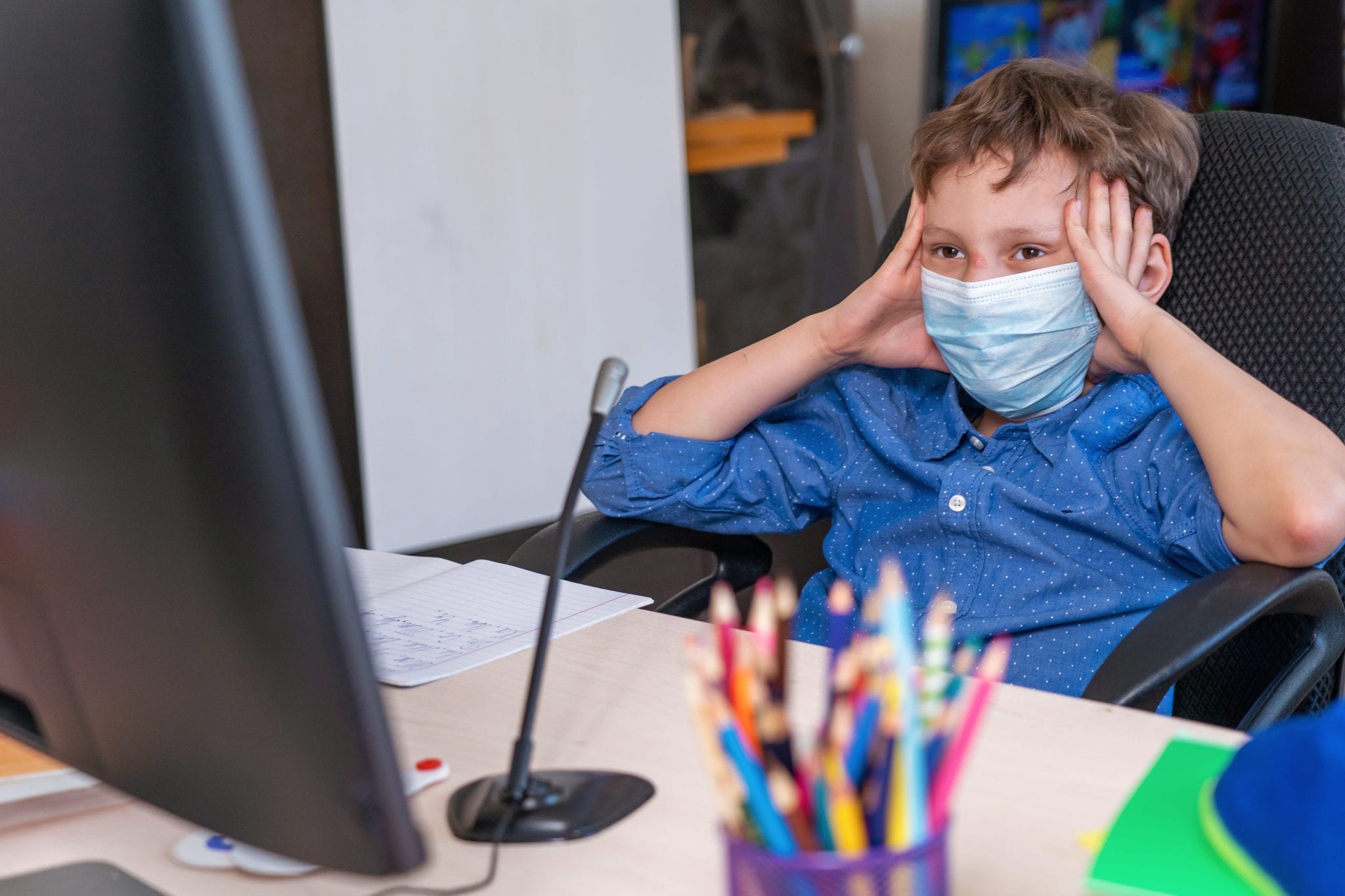Now that we’ve wrapped up what was an incredibly challenging school year for teachers, students, and families alike, we want to take a closer look at what K-12 teachers are highlighting as the biggest drawback of distance education. There are challenges specific to school location, socio-economic makeup of the student body, and resources available to the teachers, but overall the biggest drawback to distance education that teachers are highlighting is: student motivation and engagement.
 The COVID-19 pandemic was, and still is, a traumatic experience for students in a myriad of ways. As students struggled to adjust to a new virtual learning environment, they simultaneously watched their family members undergo increased levels of stress, prolonged unemployment, and worse, become sick or die from COVID-19. This psychological trauma alone is a heavy toll for students to burden. For teachers to deliver virtual instruction in the midst of all this? This was a herculean task.
The COVID-19 pandemic was, and still is, a traumatic experience for students in a myriad of ways. As students struggled to adjust to a new virtual learning environment, they simultaneously watched their family members undergo increased levels of stress, prolonged unemployment, and worse, become sick or die from COVID-19. This psychological trauma alone is a heavy toll for students to burden. For teachers to deliver virtual instruction in the midst of all this? This was a herculean task.
What Teachers Say About Student Engagement During Distance Learning
Monica Vu, a high school English teacher in Oakland, CA reflects on some of these challenges. “When we were in person, I would see a kid, and you could just pick up on how they were feeling and their energy just by looking at them,” Vu said. “But now that I’m looking at them through a computer screen, sometimes they don’t have their cameras on, and it’s hard to just gauge where students are at.”
Jessica Charton, a sixth-grade teacher at a charter school in Los Angeles County, adds, “And there’s something about, you know, going next to a student and helping them at their desk. There’s just nothing like that. And I think we’ve all taken that for granted, and we miss that.”
Tim Weber, a middle school math and science teacher in Oregon, shares, “Learning best takes place face to face and it is really hard to connect with students without that. Another struggle is making sure everyone is safe and healthy.”
Kris Ronk, a social studies teacher and Tim’s colleague, says, “Not being able to help students in person and interact or discuss concepts and ideas is a bummer. A lot of the joy of learning is sharing ideas, inferences, and discussion with others.”
Vinny Greco, eighth grade social sciences teacher in Florida, highlights “The No. 1 negative by far is losing the social component. Not getting to high-five your kids and share the same space — it took away the human element of why we love teaching in the first place.”
D.C. based middle and high school educators report “difficulty asking students to keep their camera on which reduces engagement and reading of non-verbal cues.” They echo the words of many other teachers, noticing a “general lack of motivation from students and a decrease in teacher-student and peer-to-peer connection within the virtual learning environment.”
How Teachers Cope with Diminishing Student Engagement During Distance Learning
Teachers have tried to find ways to cope with decreased levels of student engagement and motivation by employing a variety of strategies. Justin Lopez-Cardoze, a middle school science teacher in D.C., was not able to teach his students how to read a procedure with scientific tools and chemicals, but “did a demo on making a peanut butter and jelly sandwich while students learned how to co-write detailed procedures in groups to control every move [Justin] made to create one.” Myron Curtis, a high school history teacher in Virginia, took his students on virtual road trips to make history lessons more engaging. For example, he went to Salem, Massachusetts “to help students get an idea of what early Puritan culture looked like and also how that society’s patterns of social and gender roles were affected by religious ideals.” Other teachers have shared making weekly in-person visits to students’ homes to help parents with distance learning, or provide their cell phone number to students so they can reach out for support or “just to say hello.”
Although distance learning has its many challenges, Michele Gregoire Gill, a professor of education psychology at UCF, highlights the difference between well-supported online education platform and an impromptu platform. “Research generally shows that online learning can be as effective as in-person instruction, if you have a good setup, but what most schools were doing wasn’t true online learning,” she adds. “Teachers didn’t have prepared online content, so they were trying to convert what they normally do to an online platform. It was emergency triage.”
There are undoubtedly many positive takeaways from distance education, but without the proper systemic foundation to support distance learning, students will continue to experience the many obstacles that result in a lack of motivation and engagement.
Image credit: Masked child (ID 180948193 © Aleksandr Safonov, Dreamstime.com)


